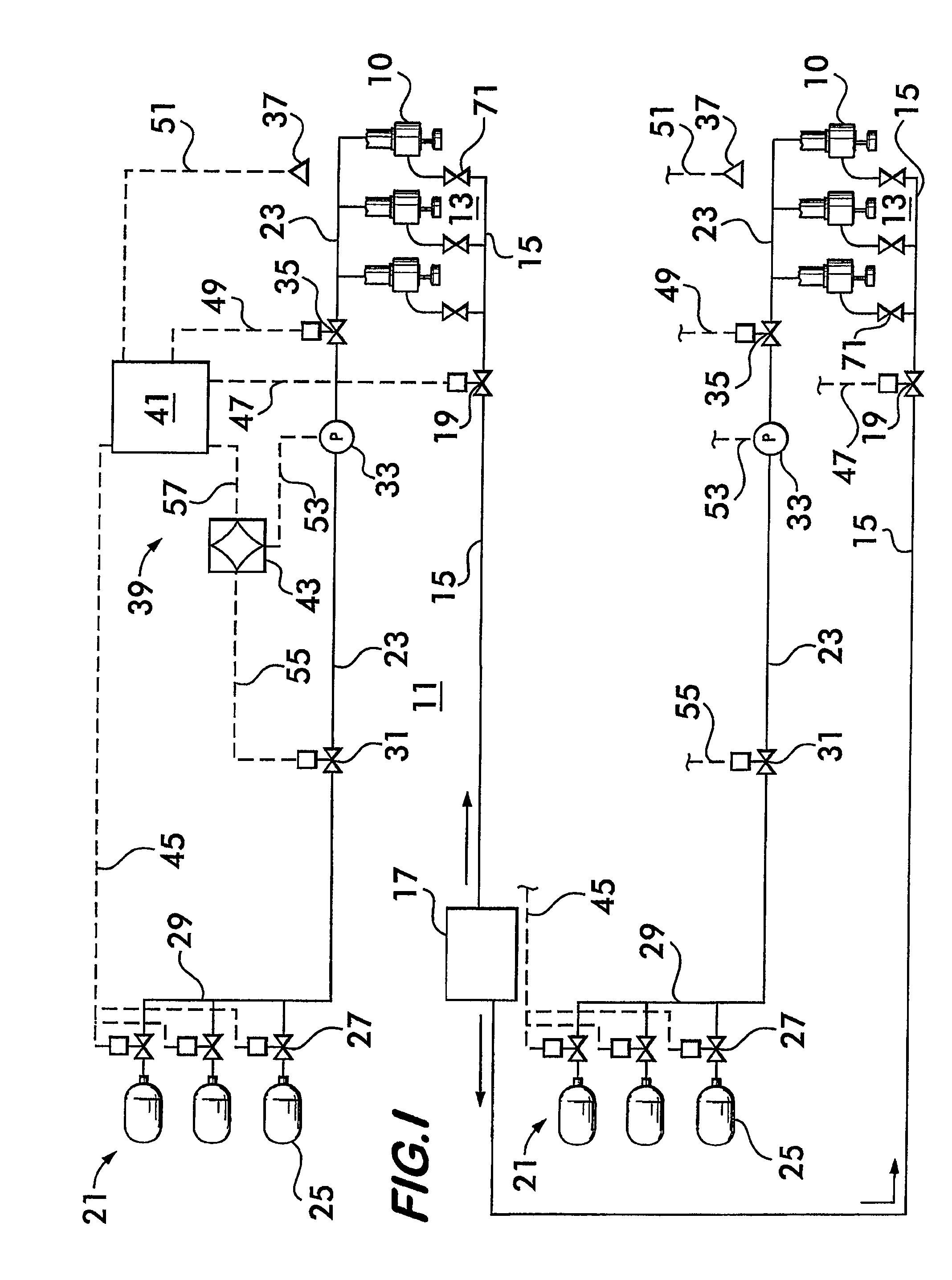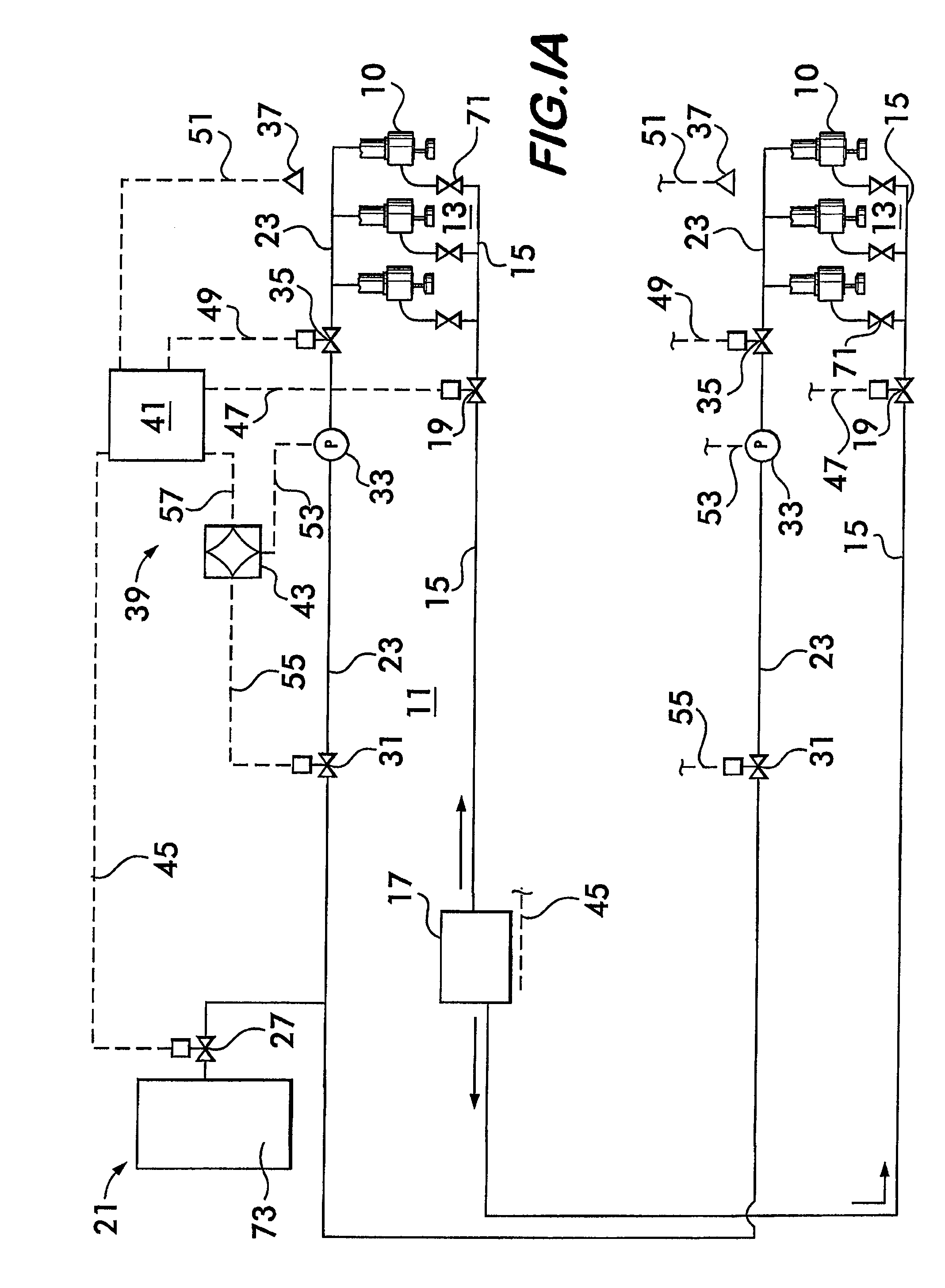Dual extinguishment fire suppression system using high velocity low pressure emitters
a fire suppression system and emitter technology, applied in the field of dual extinguishing fire suppression systems, can solve the problems of destroying the sprinkler system, bursting of pipes, freezing of water within the pipes,
- Summary
- Abstract
- Description
- Claims
- Application Information
AI Technical Summary
Problems solved by technology
Method used
Image
Examples
Embodiment Construction
[0030]FIG. 1 illustrates, in schematic form, an example dual extinguishment fire suppression system 11 according to the invention. System 11 includes a plurality of high velocity low pressure emitters 10, described in detail below. Emitters 10 are arranged in a potential fire hazard zone 13, the system comprising one or more such zones, each zone having its own bank of emitters. For clarity, only one zone is described herein, it being understood that the description is applicable to additional fire hazard zones as shown.
[0031]The emitters 10 are connected via a piping network 15 to a source of pressurized liquid extinguishing agent 17. Examples of practical liquid agents include synthetic compounds such as heptafluoropropane (sold under the tradename Novec™ 1230), bromochloro-difluoromethane and bromotrifluoromethane. Water is also feasible, and especially de-ionized water for use near charged electrical equipment. De-ionized water reduces electrical arcing due to its low conductivi...
PUM
 Login to View More
Login to View More Abstract
Description
Claims
Application Information
 Login to View More
Login to View More - R&D
- Intellectual Property
- Life Sciences
- Materials
- Tech Scout
- Unparalleled Data Quality
- Higher Quality Content
- 60% Fewer Hallucinations
Browse by: Latest US Patents, China's latest patents, Technical Efficacy Thesaurus, Application Domain, Technology Topic, Popular Technical Reports.
© 2025 PatSnap. All rights reserved.Legal|Privacy policy|Modern Slavery Act Transparency Statement|Sitemap|About US| Contact US: help@patsnap.com



